Are you a Quiet Speculation member?
If not, now is a perfect time to join up! Our powerful tools, breaking-news analysis, and exclusive Discord channel will make sure you stay up to date and ahead of the curve.
This is the big one. It's time to answer the question I've been dancing around all month: Is Bloodbraid Elf safe for Modern? Ought Wizards to rescind its banishment, to the delight of many? Or should Elf remain locked away, to the delight of many others? There have been a number of narratives running through this series, and the truth is complicated. I'm expecting a... lively comment section as a result.
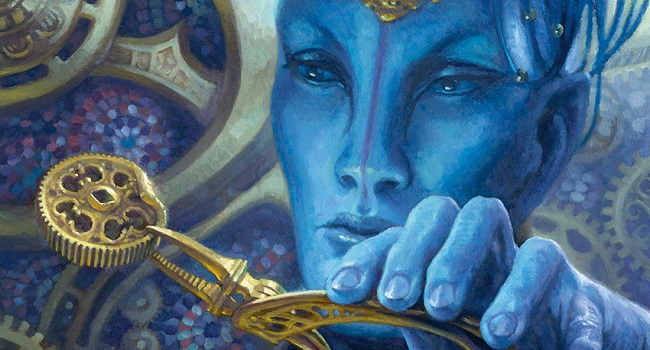
To reiterate, I'm personally against unbanning Bloodbraid Elf. I've been upfront about that all month. I have a long negative history with the card and I never want to face it again. This is personal bias. It's also irrelevant.
Instead, this article looks back on the month to see what conclusions can be drawn. From those conclusions, I will extrapolate on the impact of an unban. The test will be whether you think the impacts are positive or negative. Let's go through my results in reverse order.
The Data's Story
As last week showed, Bloodbraid has a substantial and significant positive impact on Jund's win rate. This is to be expected: add a relevant, powerful card to a strong deck, and it gets better. This result strongly suggests Jund will return to being a metagame force. Jund has fallen into Tier 2 for a number of reasons, so receiving a power boost could get it back into Tier 1.
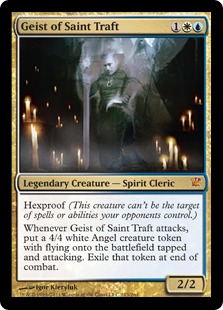 Individually speaking, there are a few weakly significant results. The strongest single result was against Jeskai Tempo. Jeskai is a reactive midrange strategy that wins via incremental advantage. Jund is very similar. Bloodbraid provides an important source of card advantage, virtual advantage, and tempo, surging Jund over Jeskai in the midgame. Jeskai lacks a similar midgame-breaker. Late-game cards are available but were not tested. This result indicates that Bloody Jund would be heavily advantaged in grindy matchups, and that incremental advantage-based decks would suffer.
Individually speaking, there are a few weakly significant results. The strongest single result was against Jeskai Tempo. Jeskai is a reactive midrange strategy that wins via incremental advantage. Jund is very similar. Bloodbraid provides an important source of card advantage, virtual advantage, and tempo, surging Jund over Jeskai in the midgame. Jeskai lacks a similar midgame-breaker. Late-game cards are available but were not tested. This result indicates that Bloody Jund would be heavily advantaged in grindy matchups, and that incremental advantage-based decks would suffer.
The other weakly significant result was against GB Tron. Jund was heavily unfavored, but Bloody Jund made the matchup even. While Tron was still able to completely shut 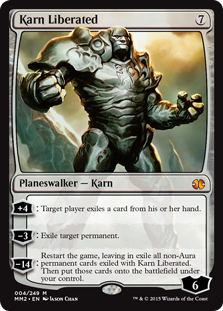 down Jund by attacking its mana with Karn Liberated, if Jund was able to avoid that fate, it could overwhelm Tron with the extra spells from cascade. Admittedly, the Tron deck wasn't optimized against Jund, but Tron's never really needed to be in the past. Its default plan of seven-mana haymakers has always been good enough. The fact that it may not work anymore is interesting.
down Jund by attacking its mana with Karn Liberated, if Jund was able to avoid that fate, it could overwhelm Tron with the extra spells from cascade. Admittedly, the Tron deck wasn't optimized against Jund, but Tron's never really needed to be in the past. Its default plan of seven-mana haymakers has always been good enough. The fact that it may not work anymore is interesting.
The other matchups failed to make the significance thresholds, but they still hold lessons. There was movement in the matchups where tempo and card advantage are important, and against Grixis a better strategy was discovered during testing that most likely would have improved Jund's matchup to significant levels. Taken into consideration with the total result, it is safe to conclude that Bloodbraid Elf does have a positive impact on Jund's performance in Modern and that the impact will be felt across a large number of matchups.
The Testing Experience
The primary conclusion of the qualitative data from the testing process was continuity. Bloodbraid does today what it did back in 2009. If you've played with or against the card before, your conclusions are still valid. This means that lessons of past formats reasonably model the end result of unbanning Bloodbraid Elf. This will allow us to predict future results with some accuracy.
Historical Perspective
The historical narrative has been that Bloodbraid Elf paid for the sins of Deathrite Shaman. 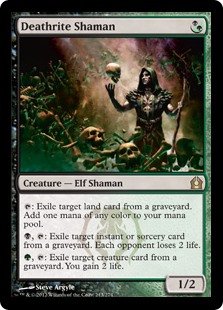 However, closer examination brought this into question. Jund was already on top of the metagame prior to Return to Ravnica, and arguably the best deck. Shaman definitely pushed the deck over the top of its closest rival, Affinity, but did not change its position in the overall metagame. Therefore, the claim that Bloodbraid's banning was unjust is questionable at best. What this indicates is that Bloodbraid alone was powerful enough to push Jund to the top of the metagame. It is also worth noting that the metagme of 2012 was similar to today's. Jund, Affinity, Tron, and Pod (now Company) were Tier 1; Storm, UWx, and Burn were Tier 2. Cards have changed for all of those strategies, but the strategies themselves remain. The same is true of Jund. This indicates that Bloodbraid will have a similar impact now as before.
However, closer examination brought this into question. Jund was already on top of the metagame prior to Return to Ravnica, and arguably the best deck. Shaman definitely pushed the deck over the top of its closest rival, Affinity, but did not change its position in the overall metagame. Therefore, the claim that Bloodbraid's banning was unjust is questionable at best. What this indicates is that Bloodbraid alone was powerful enough to push Jund to the top of the metagame. It is also worth noting that the metagme of 2012 was similar to today's. Jund, Affinity, Tron, and Pod (now Company) were Tier 1; Storm, UWx, and Burn were Tier 2. Cards have changed for all of those strategies, but the strategies themselves remain. The same is true of Jund. This indicates that Bloodbraid will have a similar impact now as before.
What to Expect
What would this mean for Modern if Bloodbraid was unleashed today? The data show the effect on current Tier 1 decks, but that doesn't necessarily encompass the entire metagame. Such a thing is very hard to do experimentally. However, given the overall power boost and the lessons from history, there are reasonable conclusions that can be drawn about the impact on the archetypes which will suggest an impact on the metagame.
Aggro
Affinity was unaffected by Bloodbraid in my testing, which backs up history. The deck has all the tempo, and incremental card advantage only matters if it's attached to removal, which is why Electrolyze is brutal. It is unlikely to be any different for other true aggro decks. The matchup is about density of relevant removal, and Bloodbraid's impact is just a function of that aspect: the more removal you play, the more likely you see it and the more likely Bloodbraid is to hit some. All other considerations are comparatively minor, and I suspect aggro will be relatively unaffected.
Midrange
Jund historically pushed all other midrange decks out of every format except for the Brainstorm-dominated Legacy. Naya may have started out strong after Alara Reborn, but it did not survive long, and other midrange strategies were inferior to both Naya and Jund. Bloodbraid does so much for these decks in the midgame that if you're not doing something at least as powerful, you cannot compete along the same axis. 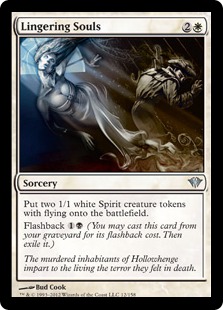 Abzan traditionally preys on Jund, but it is not really doing better than Jund right now. Siege Rhino doesn't compare, and as good as Lingering Souls is in the matchup, it's not going to do enough. I cannot imagine that Jund won't become the sole non-Shadow midrange deck in Modern.
Abzan traditionally preys on Jund, but it is not really doing better than Jund right now. Siege Rhino doesn't compare, and as good as Lingering Souls is in the matchup, it's not going to do enough. I cannot imagine that Jund won't become the sole non-Shadow midrange deck in Modern.
Exactly what will happen to Death's Shadow decks is hard to determine. My data indicated Jund could be boosted over Grixis Death's Shadow, and I think that if I'd understood the matchup better from the beginning, it would have clearly been favorable. This may knock Grixis out of Tier 1, but hybridization is a distinct possibility. I still believe that Death's Shadow could be made to work with Bloodbraid. If that's true, the deck would be terrifying and there would be no reason not to play Bloody Shadow Jund to the exclusion of other versions.
Control
Jeskai Tempo will not survive Bloodbraid's unbanning. My data was very clear on that front; it had a terrible matchup. Perhaps it could adapt to be more of a value creature deck, similar to the Restoration Angel decks from PT Return to Ravnica. Of course, those decks didn't do particularly well prior to the tournament or afterwards. I played something similar at the time, and Jund was an even match at best. Considering that the strategy has largely disappeared from Modern, I doubt it would actually be viable in any case. Jeskai will have to 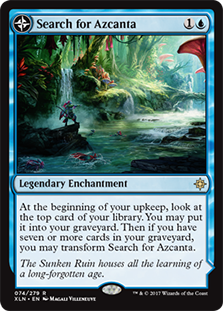 either speed up or slow down to survive. Speeding up may work, Jeskai Aggro was Tier 2 in 2012; however, Fatal Push has largely driven Delver strategies out of Modern. This makes me skeptical that such a readjustment will succeed.
either speed up or slow down to survive. Speeding up may work, Jeskai Aggro was Tier 2 in 2012; however, Fatal Push has largely driven Delver strategies out of Modern. This makes me skeptical that such a readjustment will succeed.
However, if you go slower, I'm not certain the result would be better. After Lorwyn block and 5-Color Control rotated, no control deck could really compete with Jund and the blistering red decks from Zendikar block. You could beat one or the other if you wanted to, but beating both was a tall order. Control didn't disappear by any means, but it had to become either tap-out control or ramp. Most UWx decks went the big mana route with Lotus Cobra and Noble Hierarch to power out Jace, the Mind Sculptor, Gideon Jura, and Sovereigns of Lost Alara. Yes, these days you have Ancestral Vision and Search for Azcanta to catch up on card advantage, but both are glacial in the face of cascade's tempo bursts. True UWx control is nothing special now, and if the past is any indication, that won't change with Bloodbraid loose.
Big Mana
Gx Tron will be less of a problem for Jund than before. Bloodbraid provides card advantage, tempo, and a hasty threat to blast past Tron's haymakers. Tron has been tuned for combo and Burn decks with Collected Brutality, and not for beating Jund. A resurgent and boosted Jund will force a reevaluation and possible changes, though of what kind remains unclear. Tron may accept an even matchup against Jund in exchange for percentage elsewhere.
Other big mana decks are unlikely to be affected. The many variants of GR Valakut currently have a very good matchup against Jund, which shouldn't change. Jund has a lot of dead cards game one, not much sideboard, and difficulty racing Valakut. Discard is minimally effective since the key cards are lands, and any impact card off the top is lethal. It really comes down to Jund's clock, which will slightly increase thanks to Bloodbraid's haste, but not enough to dramatically change the game.
Combo
Storm and other spell-based combo decks won't be dramatically affected. These matchups depend on 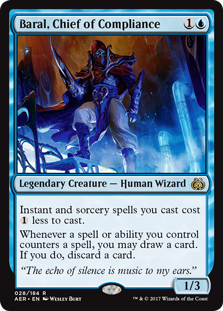 whether Jund's early discard can slow them down, which Bloodbraid doesn't affect. The clock is the other component, and while again Bloodbraid does improve the clock, it doesn't by enough to significantly shift percentages. The game should be decided by the time you'd play the Elf.
whether Jund's early discard can slow them down, which Bloodbraid doesn't affect. The clock is the other component, and while again Bloodbraid does improve the clock, it doesn't by enough to significantly shift percentages. The game should be decided by the time you'd play the Elf.
Creature combo is another story. Jund traditionally picks apart small creature decks, and current Counters Company decks are weak to Jund. It's not an unwinnable matchup by any means, and Collected Company makes up for the creatures' individual weakness. However, Bloodbraid will cause many players to pick up Jund, and the increase in a bad matchup will negatively affect Company decks. They may adapt and be fine; Pod was Tier 1 back in 2012. Or maybe the combo-heavy versions may not be viable at all, and the value-based Abzan Company will reemerge.
Overall
The way I see this playing out is for Jund to act like a wedge in the metagame. You will have to be faster or slower than Jund; trying to be similar will not work out. This has never worked 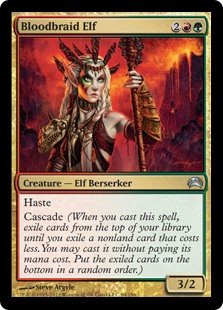 since 2009 and I've seen nothing to indicate this would not continue to happen. Midrange players will be forced to either play Bloody Jund or find a new deck.
since 2009 and I've seen nothing to indicate this would not continue to happen. Midrange players will be forced to either play Bloody Jund or find a new deck.
Control will be forced out of the proactive tempo role that Jeskai has successfully taken over the last year and back towards slow control. Whether this is a viable strategy is hard to say. Tron is likely to readjust in light of Jund's return and resurgence. Meanwhile, Valakut decks have good matchup against Jund and will not be negatively affected by the unban. This will incentivize players to pick up the deck, much to the chagrin of control decks. It could be a solvable problem, but I know I dread playing UW control against Breach Titan.
On the faster side of things, aggro looks to be minimally impacted, which may draw in displaced midrange players. Spell-based combo will be relatively unaffected, but creature combo may take a big hit. This may drive them out or force them out of combo and into value. The impact on format speed is indeterminate, but I believe that diversity will be negatively affected. You can't kill off other midrange decks and Jeskai Tempo and expect diversity to stay the same.
The Bottom Line
Let me simplify things by giving you the primary listed pro and con for unbanning Bloodbraid Elf.
- Pro - Midrange Jund will be Tier 1, at or near the top of the metagame.
- Con - Midrange Jund will be Tier 1, at or near the top of the metagame.
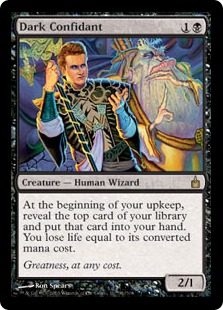 That's it. At the end of the day, the decision on this card comes down to whether or not you want Jund back to its old, format-dominating glory. That is the extent of its effect. Bloodbraid has never had as great an impact in any other deck, and there is no reason to believe that it ever will. If we unban Bloodbraid Elf, it will boost Jund. If that's what you want, then you support an unbanning. However, I urge everyone to consider the impact of the unban before picking a side.
That's it. At the end of the day, the decision on this card comes down to whether or not you want Jund back to its old, format-dominating glory. That is the extent of its effect. Bloodbraid has never had as great an impact in any other deck, and there is no reason to believe that it ever will. If we unban Bloodbraid Elf, it will boost Jund. If that's what you want, then you support an unbanning. However, I urge everyone to consider the impact of the unban before picking a side.
The end result will be a Modern unrecognizable from the current one. If you want such a change, you support an unban. If you prefer the current dynamic, you oppose.
And that's it for Bloodbraid month. It will be a relief not to type that word for a while. I need a palate cleanser, so next week will be about PT Rivals of Ixalan. See you then!





I can’t dispute any of your opinion, but I’d ask a sort of follow-up to your conclusions and general bias against bloodbraid elf:
Let’s assume that while perhaps homogenizing as a card for jund decks, it’s not “too” good for modern. Let’s also assume that while it will change the texture of some matchups (particularly those that require a good midgame boost to overcome powerful removal) that jund will still be jund. Permit me to take your testing with a grain of salt in terms of real world effect, due to variation in decklists, decklists adapting, new decks capitalising on a positive jund matchup etc etc etc. (although I do sincerely recognise the effort and time you put into this one. On that I must be clear. You are a champ)
I have no doubt that releasing the elf would smack the pendulum that is the modern metagame. For a while it would swing around a bit (and maybe even draw ire or doomsday rants from some people) but eventually settle again.
But I think there’s more going on. I really don’t think elf makes jund actually better. I think it makes it different. Different in a certain capacity which means a few top-tier matchups move a few percentage points but in that regard, no huge changes. Where I think we’ll see some real change is how jund then dominates the current tier 3 fringe decks out of existence. Currently it’s possible to sneak your way through jund as a fringe deck, although it can be tricky. What elf does is subtly alter the balance towards jund seeing just that bit deeper into its deck for hate cards like nihil spellbomb. This is the real hidden power of elf; as a force multiplier for sideboard cards.
It’s certainly an interesting conversation. I’m a proponent of having more choice and being OK with jund “being a deck” and seeing it maybe one in ten matchups or whatever. Doesn’t really change my experience although I will have the opportunity then to brew with a card I enjoy. In that regard my opinion isn’t data driven. I just like the card
All the best
That said, with any currently banned card there’s so little we can do to accurately predict the outcome. In a way you’ve pushed the boundaries of testing these ideas to the extreme and even so, we’re able to sit here, have a beer and bat opposing ideas around because the data has such a small sample size.
Part of this is all the fun, but of course there’s a lot of players who just wouldn’t want to take the risk of unsettling what is currently a nice and relatively friendly metagame.
Maybe you’d agree or not but modern is the friendliest to fringe decks and brews than I can ever remember it being.
If unleashing the elf would threaten this wild west feel, an argument could be made to just not take any risk. I’m alright with it though. Then again, I’m not everyone ;).
I feel your negative bias towards bloodbraid elf has sullied this experiment. It’s clear that bloodbraid isn’t as warping as expected and wouldn’t exactly negatively effect the meta. It just seems you don’t want to have to play against jund
But blood raid was the single most impactful of all the tested cards in this series. Bias doesn’t create data that way.
Honestly I’ve been struck by the low impact of stoneforge and preordain and Jace. Blood raid made a massive impact.
Perhaps you are the one that’s seeing what you want to see (bloodbraid being brought back)
I would appriciate a card for non-shadow midrange decks to being able to compete in terms of mana efficiency while threatening a hasty blow. There has to be a payoff for playing more than 19-20 lands and thus reducing your threat density.
In regards to control, it might be true that jeskai tempo builds would suffer, but they are being crowded out right now already anyway, and as you already mentioned, other control archetypes would become more viable again.
Imho, i do not think BBE would have the drastic impacts on modern as described above. Much more unfair stuff is going on in the format than having a mid to lategame enabler. as for colorpie utility, BBE also works great with AV and might push Temur builds towards competetive levels, but who knows: lets start brewing. If it is too bad (which it wont) , have it banned for good.
SFM or BBE, both are welcome and i am saying that as a diehard control enthusiast.
I think the result from your testing leads to an obvious conclusion:
Since 1) modern is super healthy right now and
2) bbraid would cause a major reshuffle in the entire format then…
The unban is a giant emergency button to push when things get stale again, or midrange gets bad. And now isn’t the time to break glass in case of. But it’s nice knowing the option exists.
Looking back at the history piece I see a bit of a problem with your assessment. You note that jund was already killing it before deathrite, and conclude elf was too good already (more or less) before shaman. But we dont know if banning elf but not having shaman either would have torpedoed jund at the time – we do know that elfless shamanless jund stuck around as a top tier deck for a very long time. To me that says the deck was just good period. You could have banned elf, not printed shaman, and the deck still was tier one. So shouldnt that illustrate that elf isnt the card that makes/made jund so powerful? Its just one more piece of a deck full of powerful stuff, more of a different flavour at 4cmc than a strict upgrade.
Because all the testing notwithstanding – bloodbraid still passes the sniff test. Its still just a 3/2 haste body. Pay four mana, bloodbraid into terminate swing. Pay four mana, snapcaster into terminate and block. We’re even. Pay four mana for a 3/2 cascade into a 4/5. Cool, company for four mana into a 6/6 kotr and a goyf of my own. I win?
As for homoginizing midrange around jund – I have the cure for what ails you, and its name is stoneforge mystic.
Banning Bloodbraid and not printing Shaman absolutely would have torpedoed Jund. If you go look at the MTGTop8 stats for 2013, Jund was the top deck at 13% followed by Pod at 11% and Tron at 10% and Twin at 8%. Remember that Deathrite was legal for that whole year while Elf was banned in February. Then go to 2014. Deathrite was banned in February and Jund plummeted to 5%. Given the boost that Pod received from Voice of Resurgence I argue that absent Deathrite banning Bloodbraid alone would have booted Jund from Tier 1.
As for the sniff test, I agree. On its face there’s nothing wrong with Elf. The problem is how it interacts with the format. It’s like a turbocharger: on its own it does nothing but put it in something already powerful seriously boosts the power. That’s where the danger lies, taking good decks and making them overpowering.
I actually consider Stoneforge a more plausible unban than Bloodbraid because it’s a white card. White sees little play and Wizards has previously lamented this fact. Mystic could accomplish multiple goals while all Bloodbraid has ever done is make Jund great.
I am just speaking from memory here but for a very long time tier one was something like twin jund infect affinity burn – and this was elfless shamanless jund. I mean new cards and other bans can have a huge impact on whats playable and whats good either for the deck itself or creating a favourable meta, but I believe that was a very long period in modern where jund was still tier one without elf or shaman. Then you look back and when it did have bbe it was tier one, so losing that card didnt turn it into a tier two deck so how much impact did the loss really have?
Jund not being tier one right now isnt due to a jund ban – its the rise of grixis shadow, and im not even sure what the key printing is that made this happen – stubborn denial? I think almost all of gds has been available in modern for a while so maybe its just a favourable meta? Because in the end whichever story was true at the time of bbe ban (it kept jund from being tier zero vs it was useles and unnecessary) what matters is how it changes junds position today.
I like to think the banlist is there for cards that break the format – not cards that shift the metagame. Because if we go down the latter path we can start saying “well its not really breaking format rules but maybe we should ban aether vial just to see if it makes a better overall modern experience”. On the other hand I see that unbans are a way to shakeup a stale or problematic period in the format, so theres something to be said for leaving seemingly innocuous cards on the ban list until a situation arises that an unban could actively solve.
Just stopping by to take issue with your last point—generally, situations that need fixing in Modern are much more efficiently/safely/surgically dealt with with a ban than with an unban, which is more of a stab in the dark. Wizards wants their moves to have a big impact, so if things are bad enough to warrant banlist changes, they’ll ban the offender, not unban other cards in hopes that they “solve” whatever problem.
We’ve seen this time and again with their previous banlist management; cards only come off the banlist in periods of stability. The single exception is GGT, which was unbanned not to “solve” any specific problem (indeed, its unban coincided with bans to problem cards), but because of its apparent safeness (at the time, it was something of a joke on the banlist), and likely in part to pacify Modernites upset at the major shakeup of a Twin ban.
I agree. Just ive heard both arguments – unbans should be done in periods of stability and unbans should be done to fix a problem or shake up a stale format. Personally id rather we just unban cards if it seems safe to do so, not based on any particular metagame status.
Id also like to see wizards be up front about trial unbans – ie we’re going to unban things, but be warned that if they prove problematic they will be put back on the banlist without hesitation. They could also just pay two guys to sit and play modern all day with potential unban candidates to get a much richer sample like david’s on how the card seems to be positioned. Unbanning cheap cards and then re-banning isnt too bad, but getting people to buy a set of jtms for 400 only to render them unplayable a few months later could cause some real feelbads. I feel like we saw that dynamic with eye of ugin – eldrazi was clearly getting a ban but if you wanted to play modern for that time you needed some fifty dollar eyes to do it. Same with bloom titan where most expected a ban and were reluctant to invest in the deck – which may have actually delayed the ban by suppressing how much play it saw.
I am curious if the pro tour makes something look banworthy whether that improves or weakens the likelihood of a bbe or sfm unban? Im looking at mox opal and grapeshot as cards that could put themselves in the croshairs by overperforming this weekend.
“Personally id rather we just unban cards if it seems safe to do so, not based on any particular metagame status.”
But what is that preference based on? What would unbanning cards in that way “improve?” You can surely see how subjective it is.
Unbans are indeed a resource Wizards has access to, no matter how anyone feels about them. Speaking just as a Magic strategist, I’d think them foolish not to tap into and maximize that resource ^_^
The metagame you’re describing looks most like 2015, after Birthing Pod (and Treasure Cruise/Dig Through Time) were banned. Not perfectly but close enough. Before that Jund was struggling relative to Twin and Pod. Once the playing field had been leveled yes, Jund was highly competitive though if you look back Sheridan’s metagame updates or the MTGTop8 stats Jund was worse than Abzan.
I think we all remember Elfless Jund being better than it was because of how prevalent it was for so long, but as I’m going through the data from those periods I just don’t think it was ever that great. Good certainly, and I think a good Jund player is still intimidating to play against, but the deck doesn’t generate the stats to say that it is still as good as before.
Is there any rationale why your control and treatment deck are not identical beside the treatment (bloodbraid elf)? For example, why do the control deck run 3 thoughtsieze while th treatment deck run 4? These differences will confound your results after all.
It’s really not possible. I have to take out four cards minimum to begin with and that fundamentally alters a deck by itself. Tweaking numbers of the remaining cards was also necessary to actually have Bloodbraid make sense. Also, if I didn’t make changes to reflect the test card, I’d get hammered for playing bad decks. I’m trying to model the effect of the card and that requires some adaption.